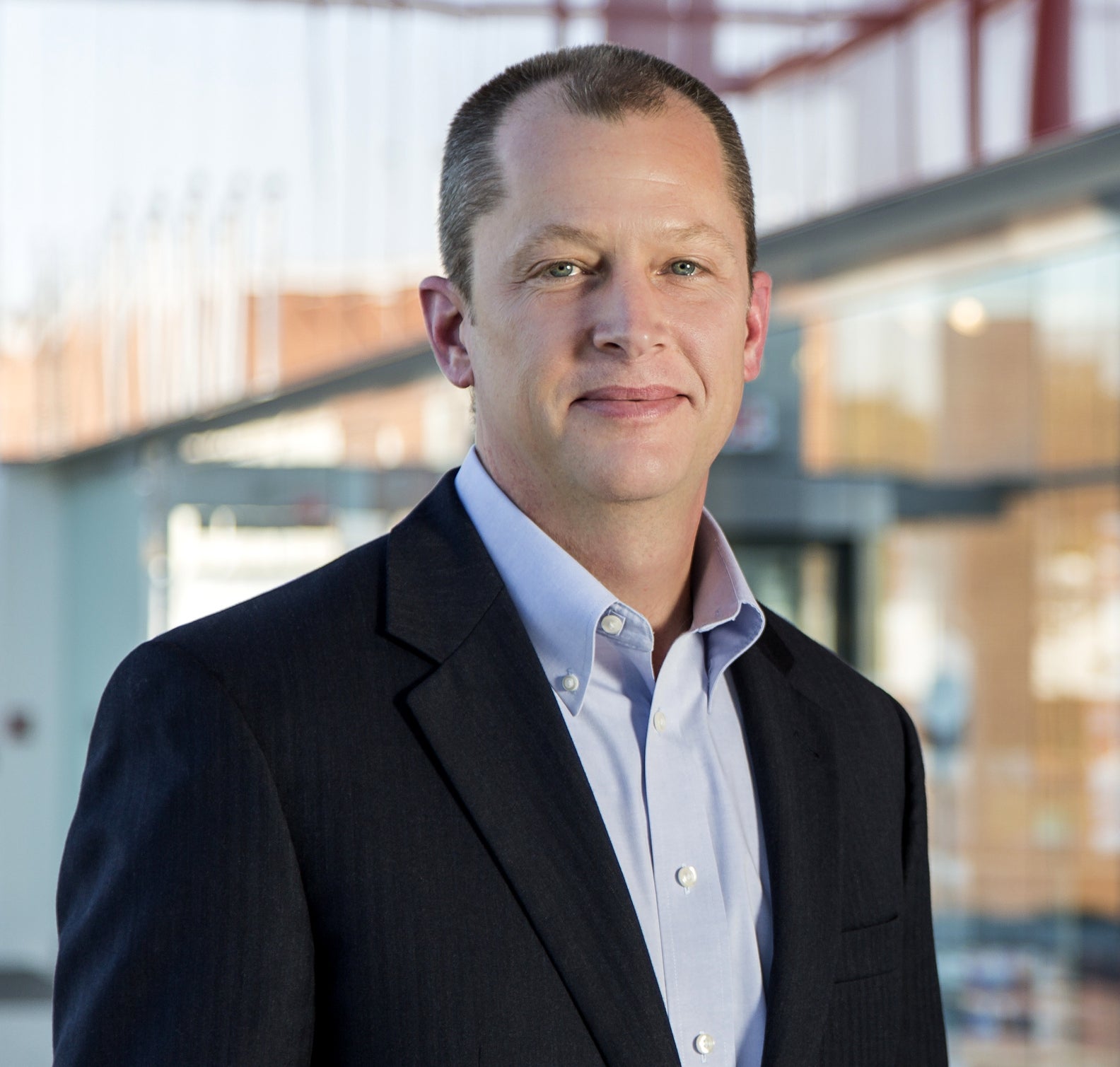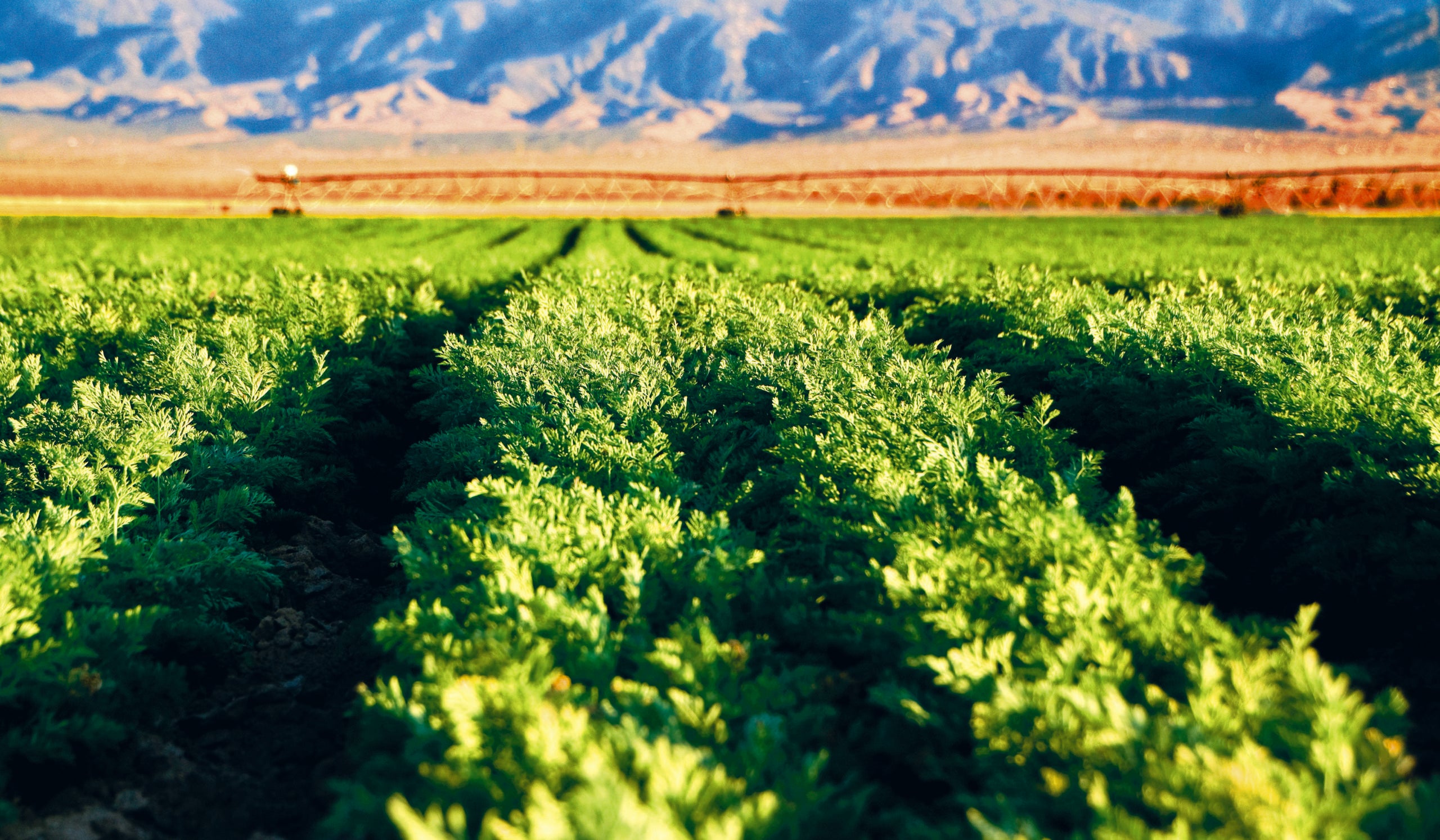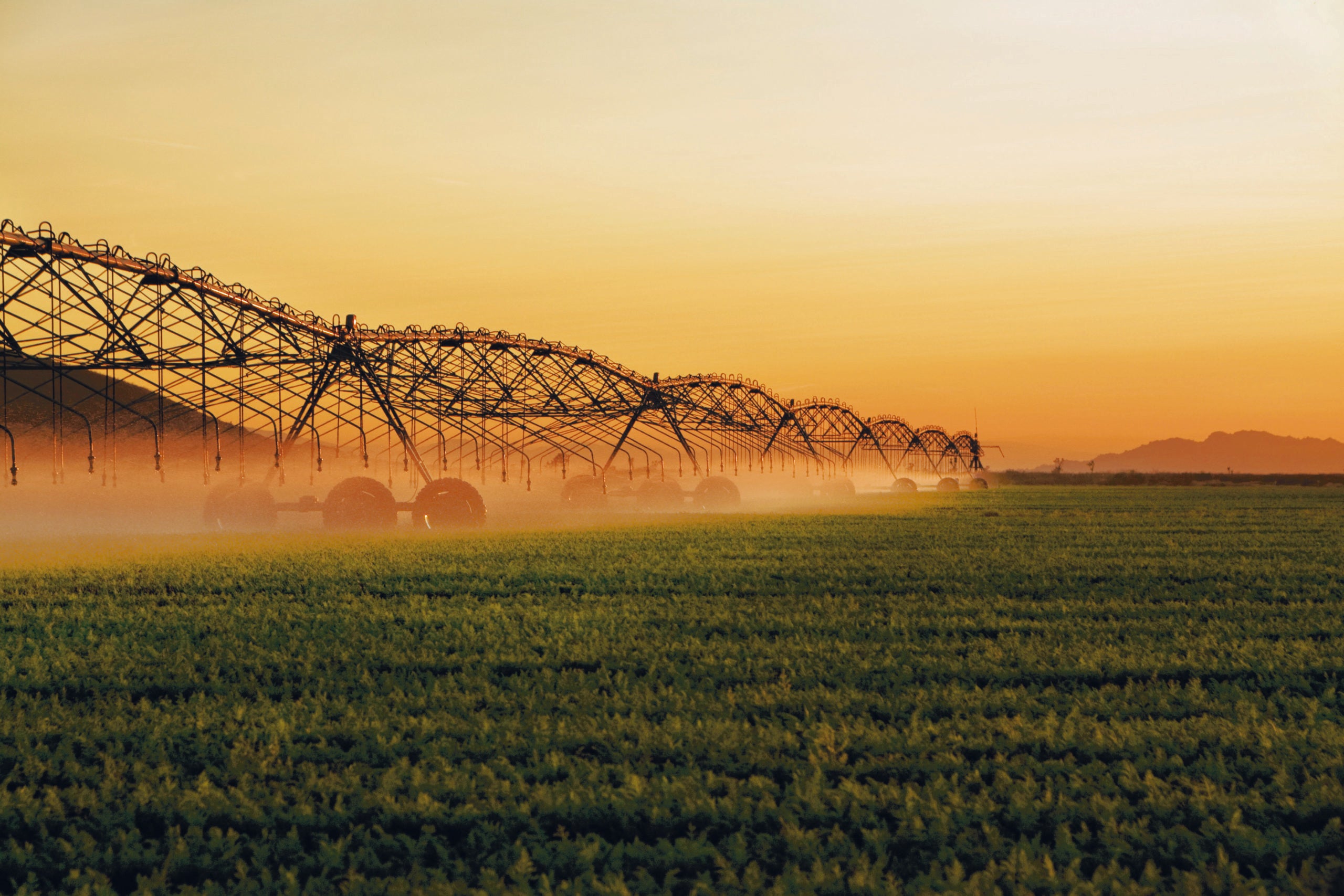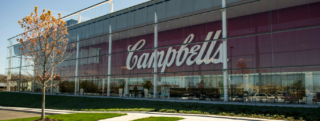- Resources
- Talking sustainability, soup and stout with Campbell’s Dave Stangis
Resources
Talking sustainability, soup and stout with Campbell’s Dave Stangis
Published: February 6, 2018 by Tom Murray
At Environmental Defense Fund, we believe that environmental progress and economic growth can and must go hand in hand. EDF+Business works with leading companies and investors to raise the bar for corporate sustainability leadership by setting aggressive, science-based goals; collaborating for scale across industries and global supply chains; publicly supporting smart environmental safeguards; and, accelerating environmental innovation.
This is the fourth in a series of interviews exploring trends in sustainability leadership as part of our effort to pave the way to a thriving economy and a healthy environment.
Dave Stangis has dedicated over three decades of his career to steering sustainability and corporate social responsibility (CSR) efforts at two iconic American companies, Intel and Campbell Soup Company. As Vice President of Corporate Responsibility and Chief Sustainability Officer at Campbell, Dave has built the company’s reputation for setting a high bar on sustainability and corporate responsibility in the food industry. Case in point: Campbell was recognized as a top corporate citizen by Corporate Responsibility Magazine for the eighth consecutive year.
Campbell set an ambitious goal to cut the environmental footprint of its product portfolio in half by 2020, which entails reducing energy use by 35 percent, recycling 95 percent of its global waste stream, and sourcing 40 percent of the company’s electricity from renewable or alternative energy sources.
I recently spoke with Dave to learn about his approach to setting big sustainability goals, the role of technology and innovation in building a more sustainable food system, and which kind of beer goes best with a bowl of soup. Below is an edited transcript of our discussion.
I’m a firm believer in setting lofty goals as a way to unlock opportunities for innovation and big environmental results. How do you approach sustainability goals at Campbell?

At Intel I worked in a world of annual targets. You set a goal, you predicted performance, and reported full transparency every year. When I came to Campbell, I wanted to expand that goal horizon by doing three things.
First, I wanted to set long-term goals to drive change management, a shift in culture, and innovation. We launched the 2020 agenda back in 2010, with a goal of cutting the environmental footprint from our production in half.
Secondly, I wanted to help the company set a goal to drive outcomes in our community. Today we set targets to improve the health of young people in our hometown communities by addressing issues such as hunger and childhood obesity in places like Camden, New Jersey.
My third goal was to factor in CSR and sustainability into individual performance objectives, and into our compensation metric we’re doing this now and it’s a great way to see reductions in energy and water use. Our annual incentive compensation program includes goals for the absolute reduction of greenhouse gas (GHG) emissions, water use and waste to landfill.
I remember having conversations with our teams about how these goals seemed a little bit beyond what we thought we could achieve. But setting aspirational goals was designed to set a sustainability culture in motion, and the Campbell employees came through across the board.
Our next generation of goals is focusing on science-based targets and absolute reductions in GHG emissions, water use, and waste-to-landfill, which incorporates our new initiatives to reduce food waste.
What results have you seen to date, both from an environmental and a business perspective?
 We’ve reduced GHG emissions more than 20 percent and cut water use by more than 17 percent. We also eliminated more than 2 million pounds of raw materials used for packaging last year alone and more than 100 million pounds cumulatively since 2010.
We’ve reduced GHG emissions more than 20 percent and cut water use by more than 17 percent. We also eliminated more than 2 million pounds of raw materials used for packaging last year alone and more than 100 million pounds cumulatively since 2010.
From a business lens, almost every pound of packaging we took out converted to a dollar in savings. That’s a million pounds of packaging equivalent to a million dollars in savings.
[pullquote]From a business lens, almost every pound of packaging we took out converted to a dollar in savings. That’s a million pounds of packaging equivalent to a million dollars in savings.
-Dave Stangis[/pullquote]
To be a leading food company you need to meet the needs of consumers, and our research shows that one of those needs is transparency. That’s why we are telling the story of where the food comes from, the sustainable agriculture practices used to grow that food, and focusing on the traceability and transparency of our ingredients. We’re also asking our suppliers to focus on transparency and data metrics. We’re partnering with our retailers to find opportunities in the marketplace that help lower costs but also make better food and keep the planet healthy.
Lastly, our data show that when people think about coming to work at Campbell, one of the first places they look is our corporate responsibility microsite it’s also one of the places where they spend the most time. This is where they are getting a sense of the culture and the kind of work they could engage in. It’s not just consumers that want to know how we operate, it’s our employees, too.
How is Campbell collaborating across the value chain to expand your impact and accelerate environmental benefits?
We know that to create longstanding change we need to work outside of our own four walls. We’ve done a lot of work on our Scope 1 and Scope 2 operational footprint, but in 2011 we hired Dr. Dan Sonke as Director of Sustainable Agriculture, and he has been working with stakeholders across the entire food supply chain. For example, Dan started working with our tomato growers to collect information around fertilizer use, water consumption, and yield. Just being able to categorize and anonymously share that data was a huge win to our farmers from an economic and output standpoint, and a benefit to us from a cost and quality standpoint.
Our goal through collaborations with EDF, Land O’Lakes, Walmart, and other partners is to find efficiencies that benefit everybody in the value chain. We also need to apply learnings to other partnerships we’re involved in, and continue breaking outside of our normal partnership base.
How is Campbell taking advantage of technology and innovation as it accelerates across the food and agriculture sector?
I’m a science and technology person at heart, so I’m happy you asked. One of the things I like to do is study where tech is going not in just two years but in five or 10 years and to think about what that means for the company.
[pullquote]The connected kitchen refers to new engaging food experiences designed into appliances for a connected world. Limitless local describes agile and distributed production that connects to the local source. [/pullquote]
Today we’re seeing that some of the technology tools and investments that are being made in the agriculture space are unlocking opportunities that we haven’t seen before. We’re also looking at the potential for technology in areas such as personalized nutrition, the connected kitchen, limitless local, clean ag tech, and biodiverse ingredients. These are areas of strategic foresight we’ve identified through a structured process at Campbell.
Smart companies are watching the trends, and having conversations with their suppliers and their growers in order to be able to take advantage of technology first and in the long term.
It seems like the agriculture sector is ripe for disruption which is really exciting to be part of. I’m also excited to see companies getting involved in the climate policy arena. How does Campbell approach public policy engagement?
 It’s a complex subject these days but I look at engagement with public policymakers as an opportunity for education. It’s an opportunity to help share the perspective of our business in a direct and transparent way.
It’s a complex subject these days but I look at engagement with public policymakers as an opportunity for education. It’s an opportunity to help share the perspective of our business in a direct and transparent way.
On a principle basis, public policy that enables, incentivizes, and promotes smart environmental decisions, and enables good investment in technology and infrastructure to accelerate corporate environmental commitments and goals is a win-win for everybody.
Campbell has made public commitments on reducing energy and GHG emissions. We’ve made investments in renewable energy infrastructure that are good for the company, the planet, and for our consumers, and we’ve advocated for those frameworks to stay in place, but we also need to stay focused. Our goals are 10-year targets, and we’ll keep marching towards the targets.
Ultimately, we’re going to keep our climate commitments no matter what the external world is doing and we’re going to keep our commitment to the environmental targets we’ve set.
I understand you’ve been more vocal from a policy standpoint in Ohio. Can you elaborate on why you chose to more formally engage in policy in the state?
We have significant investments in renewables in places like Napoleon, Ohio where we have our largest plant. We’ve installed 9.8 megawatts on 60 acres of solar fields there, and want to be able to maintain those investments so we’ve been more public on supporting renewable frameworks there.
Campbell has been in Ohio for decades, it’s our largest soup manufacturing plant by far. We are a significant buyer of resources – we rely on water, energy, land, and we need to be stewards of all of those resources. Weighing in on some other states’ legislation where we don’t have a facility or don’t have an investment would not have had the same impact.
If I’m giving advice to other sustainability people on the advocacy front, I would say find your principles and decide what you stand for. It’s a lot more productive to advocate what you’re for rather than to argue for things you’re against.
Continuing with the theme of advice, I understand you mentor a number of young professionals. Do you have any words of wisdom for them on sustainability?
One common piece of advice I give to young professionals or to anyone interested in transitioning into a CSR career is to broaden their search far beyond sustainability. At a purpose-driven organization like Campbell, you can drive sustainability or sustainable business initiatives from almost any division within the company.
Here’s where I’ll give a brief plug for my book that I’d like to think is filled with further wisdom. It’s called 21st Century Corporate Citizenship: A Practical Guide to Delivering Value to Society and Your Business.
One last question for you I’ve heard through the grapevine that you’re a bit of a beer aficionado. Can you recommend a great beer for winter, and which Campbell soup would it go best with?
Interesting. I’m a huge fan of IPAs. And I will search out any new IPA that I haven’t had before. In winter I do like to mix in a few stouts and there are some great stouts that come out this time of year that mix in a little bit of chocolate, vanilla and even some pepper. I’m a big supporter of hyper-local brewers like Triple Bottom in Philadelphia and 2 Tom’s in Fort Wayne. Stone makes a great Xocoveza that’s really good this time of year.
My go-to Campbell soup is Chunky Chicken Noodle. Though a good cheese soup would go nicely with a stout. But the one product I spend the most money on across the portfolio is Pepperidge Farm Goldfish. I buy cartons of them and they go with anything: stouts, IPAs, and even a nice cabernet.
Follow Tom on Twitter, @tpmurray
